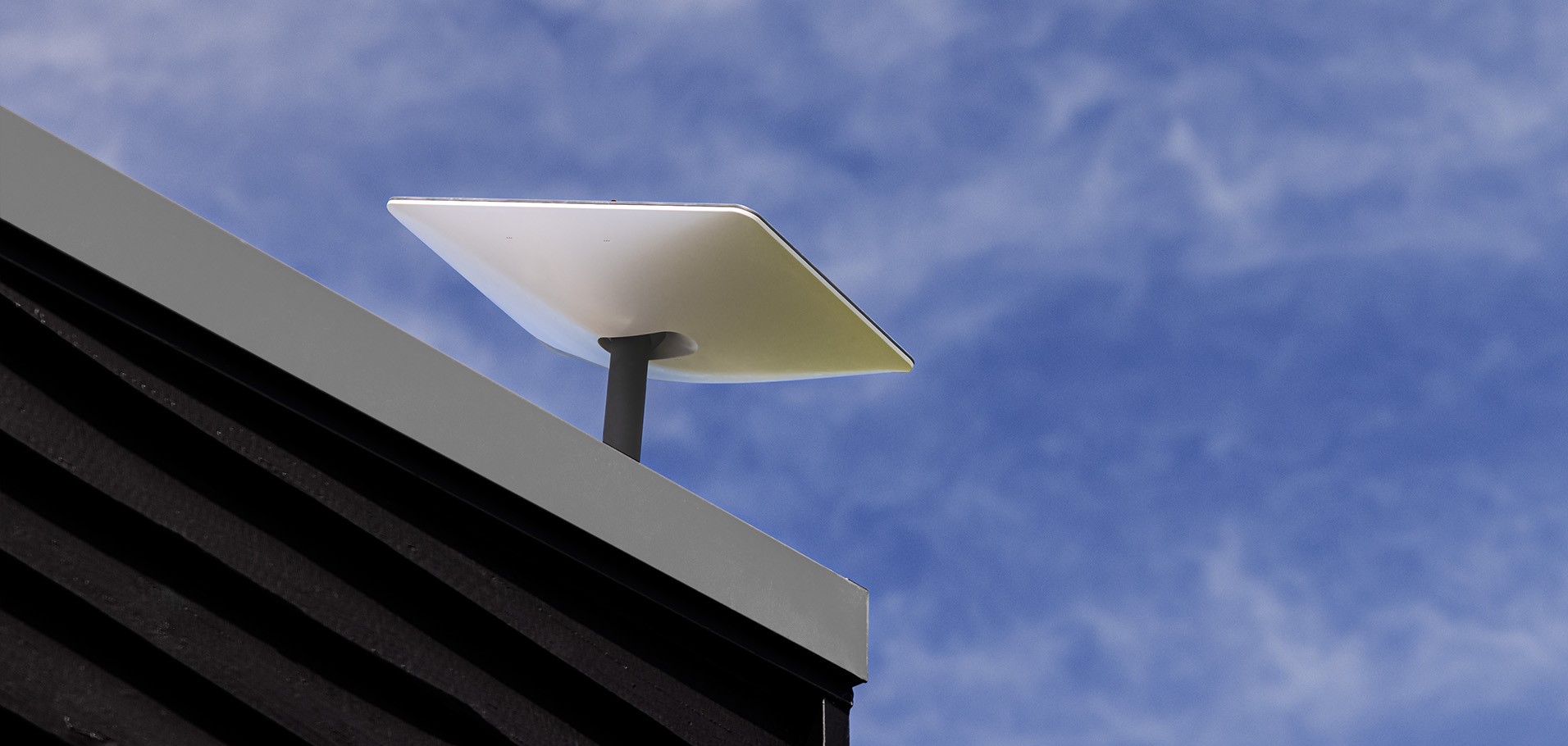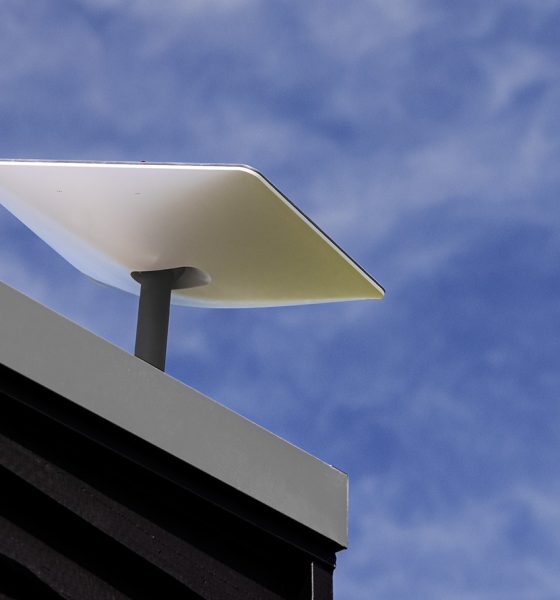

News
SpaceX’s Starlink satellite internet gains 750,000 subscribers in nine months
SpaceX says its Starlink satellite internet service has surpassed one million active subscribers just two years after its first limited beta release.
SpaceX began launching operational Starlink satellites in November 2019. A little over three years later, the company has successfully launched more than 3600 Starlink satellites, of which some 3000 are operational and ready to serve customers. That network expansion – unprecedented in the history of spaceflight and producing a satellite constellation a magnitude larger than the next largest – has also allowed SpaceX to significantly increase the number of active users it can serve.
In June 2022, CEO Elon Musk reported in an all-hands meeting that SpaceX’s Starlink internet had “nearly” 500,000 users. Just six months later, SpaceX says that figure has doubled to “more than 1,000,000 active subscribers,” indicating an average of roughly 2600 new subscribers per day throughout the second half of 2022. In the relatively tiny world of satellite broadband internet service, a million subscribers makes SpaceX directly comparable to companies that have been serving satellite internet for decades just two years after its first offering entered beta.
The update that's rolling out to the fleet makes full use of the front and rear steering travel to minimize turning circle. In this case a reduction of 1.6 feet just over the air— Wes (@wmorrill3) April 16, 2024
In the US, Hughes Network is SpaceX’s largest competitor and currently has a bit less than 1.3 million subscribers in the Americas. Cloudflare data suggests that only half of Starlink’s far more international customer base is located in the United States, indicating that SpaceX has secured almost 40% as many subscribers after offering its competing service for just two years. That growth – roughly 250,000 new subscribers per quarter since March 2022 – is the exact opposite of what virtually every other satellite internet provider has been experiencing for the last several years, most of which are slowly losing subscribers instead of gaining them.
Comments from CEO Elon Musk and actions made by SpaceX indicate that the company is unlikely to drastically slow that growth anytime soon. In 2021, Musk noted that SpaceX would only truly struggle with congestion once Starlink had “several million” subscribers. In late 2020, SpaceX also applied for FCC permission to operate up to five million user terminals (dishes that connect to Starlink) just in the United States.
Starlink’s design makes prioritizing a country or region essentially impossible. Instead of the large geostationary satellites most competitors operate tens of thousands of kilometers above Earth’s surface, where they more or less hover above a region of choice, Starlink satellites operate just 550 kilometers (~340 mi) up. At that altitude, each satellite orbits the Earth every 95 minutes and only spends a few minutes (or even seconds) over any given country. That strongly encourages SpaceX to serve customers in as many countries as possible, each of which has its own painful market entrance process for a new communications provider.
After years of work, SpaceX’s government relations team has secured permission to operate Starlink in roughly a quarter of all countries on Earth. Combined, those countries represent more than 1.5 billion people, 19% of the global population.
But Starlink likely only needs to convert a minuscule fraction of those people into customers to be a worthwhile and financially sustainable pursuit for SpaceX. The total capacity of the first 4405-satellite Starlink constellation can only be guessed at, but roughly estimating SpaceX’s total Starlink revenue is much easier. The cost of a subscription varies widely from country to country but Cloudflare indicates that the vast majority of subscribers live in countries where it costs around $100-110 per month and around $600 for a subsidized dish. Even accounting for SpaceX footing some of the bill for Starlink service in Ukraine, the network is almost certainly already generating more than a billion dollars of revenue per year
While the FCC is making it far from easy, SpaceX is already preparing to begin building a second-generation Starlink Gen2 constellation with nearly 30,000 satellites, each of which could launch with almost a magnitude more usable bandwidth than Gen 1 satellites. If SpaceX can continue to find new customers around the world, a million subscribers using Starlink Gen1 while the network is less than 70% complete imply that the most capable version of Starlink Gen2 could serve roughly 10-12 million subscribers at minimum. Assuming SpaceX does not substantially lower its revenue, the recurring revenue from 12 million Gen2 subscribers could be $14.5 billion per year.
Reaching Starlink profitability will be an even bigger challenge – and one that CEO Elon Musk has (perhaps overzealously) indicated could bankrupt SpaceX if the company attempts to do so with its Gen1 design. But securing a million active subscribers in two years and some 750,000 in the last nine months arguably indicates that SpaceX is on a good path and should allow the company to either decrease its fundraising burden or increase the reach of future spending on R&D and expansion.

Elon Musk
Elon Musk’s X will start using a Tesla-like software update strategy
The initiative seems designed to accelerate updates to the social media platform, while maintaining maximum transparency.

Elon Musk’s social media platform X will adopt a Tesla-esque approach to software updates for its algorithm.
The initiative seems designed to accelerate updates to the social media platform, while maintaining maximum transparency.
X’s updates to its updates
As per Musk in a post on X, the social media company will be making a new algorithm to determine what organic and advertising posts are recommended to users. These updates would then be repeated every four weeks.
“We will make the new 𝕏 algorithm, including all code used to determine what organic and advertising posts are recommended to users, open source in 7 days. This will be repeated every 4 weeks, with comprehensive developer notes, to help you understand what changed,” Musk wrote in his post.
The initiative somewhat mirrors Tesla’s over-the-air update model, where vehicle software is regularly refined and pushed to users with detailed release notes. This should allow users to better understand the details of X’s every update and foster a healthy feedback loop for the social media platform.
xAI and X
X, formerly Twitter, has been acquired by Elon Musk’s artificial intelligence startup, xAI last year. Since then, xAI has seen a rapid rise in valuation. Following the company’s the company’s upsized $20 billion Series E funding round, estimates now suggest that xAI is worth tens about $230 to $235 billion. That’s several times larger than Tesla when Elon Musk received his controversial 2018 CEO Performance Award.
As per xAI, the Series E funding round attracted a diverse group of investors, including Valor Equity Partners, Stepstone Group, Fidelity Management & Research Company, Qatar Investment Authority, MGX, and Baron Capital Group, among others. Strategic partners NVIDIA and Cisco Investments also continued support for building the world’s largest GPU clusters.
News
Tesla FSD Supervised wins MotorTrend’s Best Driver Assistance Award
The decision marks a notable reversal for the publication from prior years, with judges citing major real-world improvements that pushed Tesla’s latest FSD software ahead of every competing ADAS system.

Tesla’s Full Self-Driving (Supervised) system has been named the best driver-assistance technology on the market, earning top honors at the 2026 MotorTrend Best Tech Awards.
The decision marks a notable reversal for the publication from prior years, with judges citing major real-world improvements that pushed Tesla’s latest FSD software ahead of every competing ADAS system. And it wasn’t even close.
MotorTrend reverses course
MotorTrend awarded Tesla FSD (Supervised) its 2026 Best Tech Driver Assistance title after extensive testing of the latest v14 software. The publication acknowledged that it had previously criticized earlier versions of FSD for erratic behavior and near-miss incidents, ultimately favoring rivals such as GM’s Super Cruise in earlier evaluations.
According to MotorTrend, the newest iteration of FSD resolved many of those shortcomings. Testers said v14 showed far smoother behavior in complex urban scenarios, including unprotected left turns, traffic circles, emergency vehicles, and dense city streets. While the system still requires constant driver supervision, judges concluded that no other advanced driver-assistance system currently matches its breadth of capability.
Unlike rival systems that rely on combinations of cameras, radar, lidar, and mapped highways, Tesla’s FSD operates using a camera-only approach and is capable of driving on city streets, rural roads, and freeways. MotorTrend stated that pure utility, the ability to handle nearly all road types, ultimately separated FSD from competitors like Ford BlueCruise, GM Super Cruise, and BMW’s Highway Assistant.
High cost and high capability
MotorTrend also addressed FSD’s pricing, which remains significantly higher than rival systems. Tesla currently charges $8,000 for a one-time purchase or $99 per month for a subscription, compared with far lower upfront and subscription costs from other automakers. The publication noted that the premium is justified given FSD’s unmatched scope and continuous software evolution.
Safety remained a central focus of the evaluation. While testers reported collision-free operation over thousands of miles, they noted ongoing concerns around FSD’s configurable driving modes, including options that allow aggressive driving and speeds beyond posted limits. MotorTrend emphasized that, like all Level 2 systems, FSD still depends on a fully attentive human driver at all times.
Despite those caveats, the publication concluded that Tesla’s rapid software progress fundamentally reshaped the competitive landscape. For drivers seeking the most capable hands-on driver-assistance system available today, MotorTrend concluded Tesla FSD (Supervised) now stands alone at the top.
News
Elon Musk’s Grokipedia surges to 5.6M articles, almost 79% of English Wikipedia
The explosive growth marks a major milestone for the AI-powered online encyclopedia, which was launched by Elon Musk’s xAI just months ago.

Elon Musk’s Grokipedia has grown to an impressive 5,615,201 articles as of today, closing in on 79% of the English Wikipedia’s current total of 7,119,376 articles.
The explosive growth marks a major milestone for the AI-powered online encyclopedia, which was launched by Elon Musk’s xAI just months ago. Needless to say, it would only be a matter of time before Grokipedia exceeds English Wikipedia in sheer volume.
Grokipedia’s rapid growth
xAI’s vision for Grokipedia emphasizes neutrality, while Grok’s reasoning capabilities allow for fast drafting and fact-checking. When Elon Musk announced the initiative in late September 2025, he noted that Grokipedia would be an improvement to Wikipedia because it would be designed to avoid bias.
At the time, Musk noted that Grokipedia “is a necessary step towards the xAI goal of understanding the Universe.”
Grokipedia was launched in late October, and while xAI was careful to list it only as Version 0.1 at the time, the online encyclopedia immediately earned praise. Wikipedia co-founder Larry Sanger highlighted the project’s innovative approach, noting how it leverages AI to fill knowledge gaps and enable rapid updates. Netizens also observed how Grokipedia tends to present articles in a more objective manner compared to Wikipedia, which is edited by humans.
Elon Musk’s ambitious plans
With 5,615,201 total articles, Grokipedia has now grown to almost 79% of English Wikipedia’s article base. This is incredibly quick, though Grokipedia remains text-only for now. xAI, for its part, has now updated the online encyclopedia’s iteration to v0.2.
Elon Musk has shared bold ideas for Grokipedia, including sending a record of the entire knowledge base to space as part of xAI’s mission to preserve and expand human understanding. At some point, Musk stated that Grokipedia will be renamed to Encyclopedia Galactica, and it will be sent to the cosmos.
“When Grokipedia is good enough (long way to go), we will change the name to Encyclopedia Galactica. It will be an open source distillation of all knowledge, including audio, images and video. Join xAI to help build the sci-fi version of the Library of Alexandria!” Musk wrote, adding in a later post that “Copies will be etched in stone and sent to the Moon, Mars and beyond. This time, it will not be lost.”








